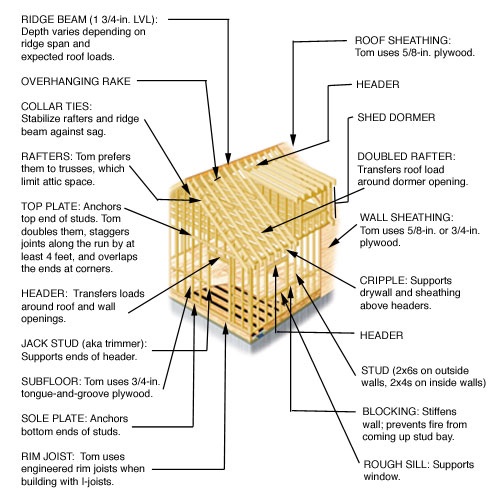
FRAMING
Welcome back to our series titled: Why SunCoast? What makes us different.
Today let's talk about the next most important thing that will keep you loving your new home!
THE FRAME
It makes sense, right? The foundation and the frame are the bones of your home and if done correctly, will give you many wonderful years in your beautiful home.
The frame is the skeleton of a house. If the frame is strong, it provides the necessary support for everything that follows. But if it's weak, no amount of expensive finishes will hide the flaws.
Those perfect walls will begin to crack every time a door slams, the granite countertops will gradually become unlevel, and those beautiful wood floors will bounce and squeak like a rusty spring.
Shortcuts are a big mistake and so is using less than stellar materials such as crooked wood. You may think that is obvious but you would be surprised what people will do to save an extra buck.
While the basics of modern stud-wall framing haven't changed much in the past 25 years, the tools and materials certainly have. Pneumatic nail guns have speeded up the assembly process. Engineered lumber is steadily usurping sawn boards, and metal connectors are now routinely used to enhance stiffness and sturdiness.
But tools and materials by themselves don't guarantee a strong house frame. They need to be in the hands of a skilled framing crew who know how to use them. If they build it right the first time you won’t have problems later on. Eugene is KNOWN for being super, super picky about what you don’t see. He has a reason for everything and it comes from decades of experience so when he asks the framing crew to rip something out and do it a different way he has a solid reason.
House frames can be made out of thick posts and beams (the oldest framing method) or extra-long studs (the balloon frames of the Victorian era). We typically frame in one-story "platforms" consisting of 8, 9, or 10-foot-high stud walls resting on a plywood-sheathed subfloor. Each story is framed atop the previous one until it's time to put on the roof. We use engineered trusses between floors and we may use roof trusses or stick build them ourselves depending on the needs of the customer and the constraints of our economy.
During COVID, for example, we couldn’t even get pricing much less a timeframe for roof trusses for months!! This is another thing that sets SunCoast apart...Eugene was stick building roofs long before trusses ever came along. He knows exactly how it’s supposed to be done and yes, it is still approved by our best engineers! There really isn’t anything Eugene can’t do. When we say you are in good hands, that is putting it mildly.
This image by Ian Worpole illustrates the complexity.
STRENGTHENING THE FRAME
Concern about the weakness of nailed joints in our hurricane-prone area have made metal straps and ties a fixture in codebooks and on today's job sites.
An I-joist consists of a "web" of high-grade OSB (oriented strand board) glued between two horizontal "flanges" of conventional lumber or LVL (laminated veneer lumber). It's just as strong as a sawn 2x of the same width but only half the weight, and it's made in lengths of up to 60 feet.
Best of all, holes for plumbing and ductwork can be cut through the web (at specified sizes and intervals) without compromising structural integrity.
LVL beams are made up of wood veneers glued together with the combination of pressure and heat. All the veneers are oriented precisely in the same lengthwise direction, making LVLs nearly 20 percent stiffer than ordinary sawn lumber.
While LVLs are commonly used as ridge beams and headers above windows and doorways, they can be used anywhere that needs maximum performance in minimum space. They're heavy but they're as strong as steel, yet can be cut with an ordinary saw.
Here at SunCoast, we strive to make our homes so they can withstand what most can’t. While we pay close attention to the finishes of your house, we give an enormous amount of attention to the strength of your home.
What does that mean in terms of time? Many homeowners look at track home builders and compare their timeframe to ours. We have a different goal than a tract home builder. We want your home to be looking as good as new decades from now. Our primary goal is quality. Their primary goal is quantity. You as a homeowner need to decide what your goal is and choose the one that is right for you.
All of the things you can’t see will most definitely come back to help or haunt you! After reading this we hope you see how important it is to understand that not all homes are created equal!
See you back here soon! :)
